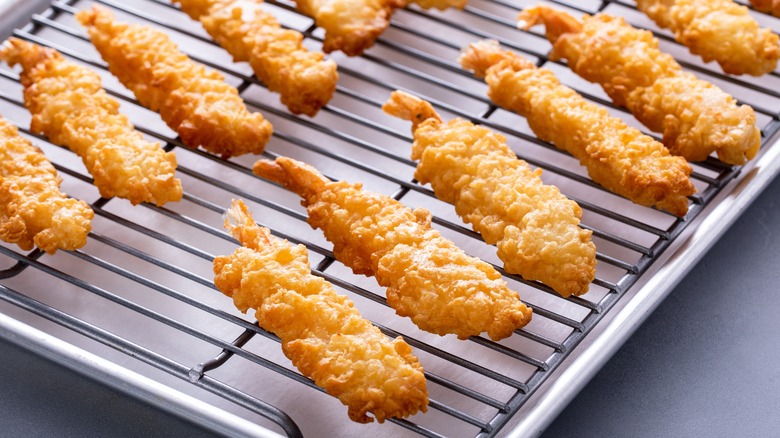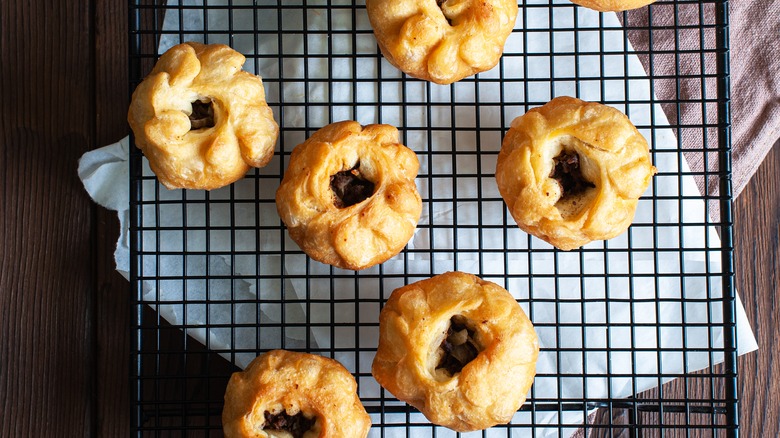The Baking Sheet Tip For Keeping Fried Foods Extra Crispy
A vat of bubbling oil can be intimidating for those who aren't regular deep fryers. The pain points of making sure the exhaust fan is working, locating a slotted spoon in a disorganized utensil drawer, and wondering what to do with all the oil after it's been used are enough to put anyone off. However, there's nothing as dreamy as hearing the appetizing crunch on a perfectly deep-fried piece of crispy chicken to rescind our rebellion.
Nevertheless, one problem remains. After all the hard work of setting up a cast iron skillet and opening the windows, our scrumptious crispy shrimp, French fries, and plantain can turn limp and soggy in minutes if not devoured immediately. Luckily, there's a simple way to maximize the extra-crispiness of homemade fried foods, and we bet you've most likely got everything you need to get cracking in your cupboards already.
So, what's the best way to maximize the crispy, cragginess of a freshly fried latke or the crunchy coating on a golden beer-battered cod? Skip the plate and paper towel stage and immediately place your piping-hot fried food on a cooling rack set over a baking sheet.
Why does a baking sheet and cooling rack make fried food crispier
Using a cooling rack puts air circulation at the front and center of fried food preparation, which is a must if you want to encourage an external crunch and eliminate a soggy surface. Here's the science behind it: the residual heat in your fried delicacy needs to escape somewhere. A plate or paper towel acts as a barrier to this heat, creating unwanted steam, which softens the surface of fried foods and makes them feel gummy and squishy instead of cracklingly crisp.
Surrounding your crispy-coated katsu chicken, falafels, and churros with plenty of space helps them to retain their structural integrity as the cold air circulates around them. Plus, a short rest period allows the fried foods to finish cooking, firmly sets coatings and batters, and ensures none of us impatient types burn our mouths on the first ambrosial bite.
This isn't to say the good ol' paper towel approach is a redundant technique. Go ahead and place them on the baking sheet beneath the cooling rack so they can catch any grease that drips down, making clean-up easier and faster. Double or even triple up on the layers if you're cooking in many batches to avoid having to replace them in between each new stage of frying. You can also still use paper towels to pat dry your fried food once the exterior has set to remove any unwanted grease that hasn't already dripped off.

